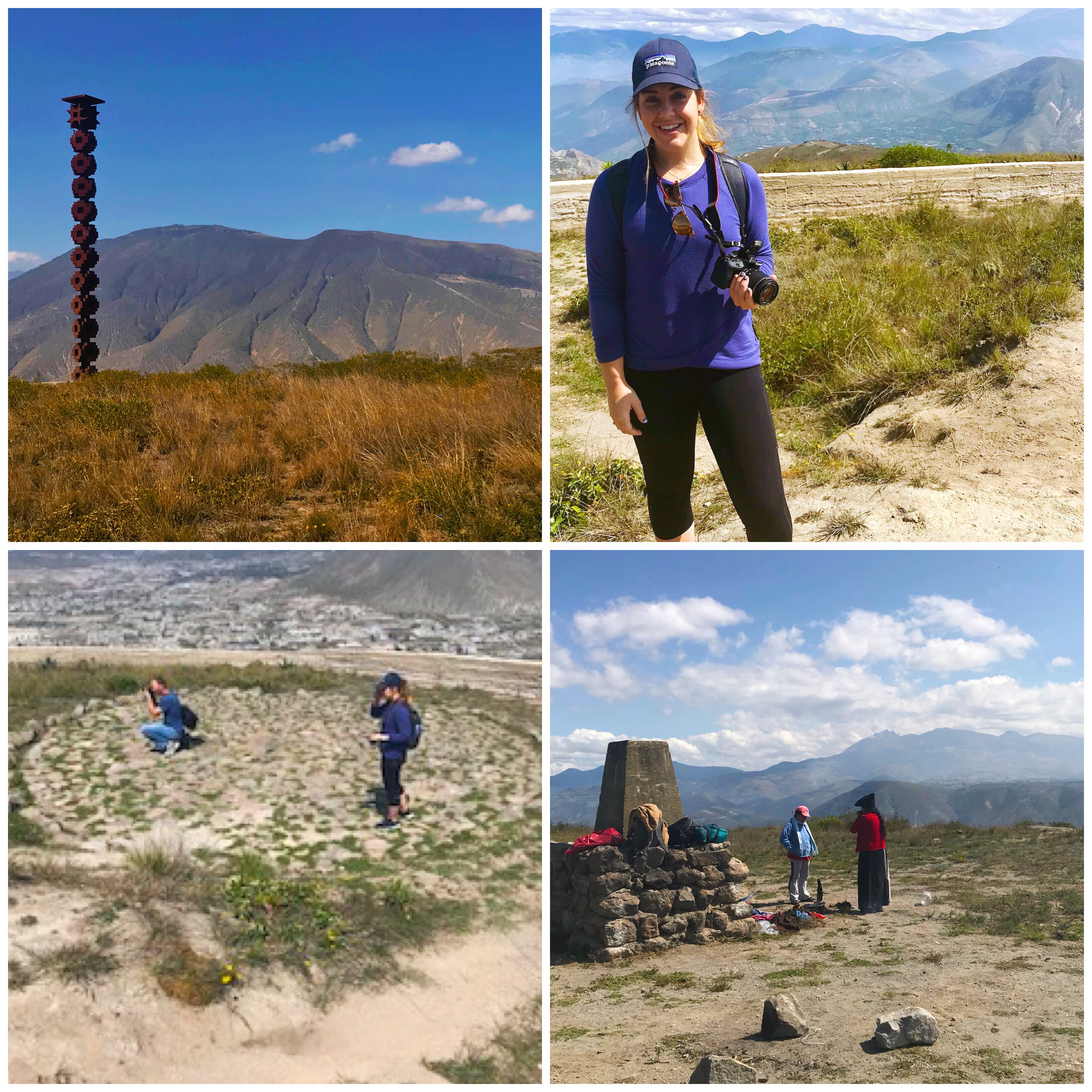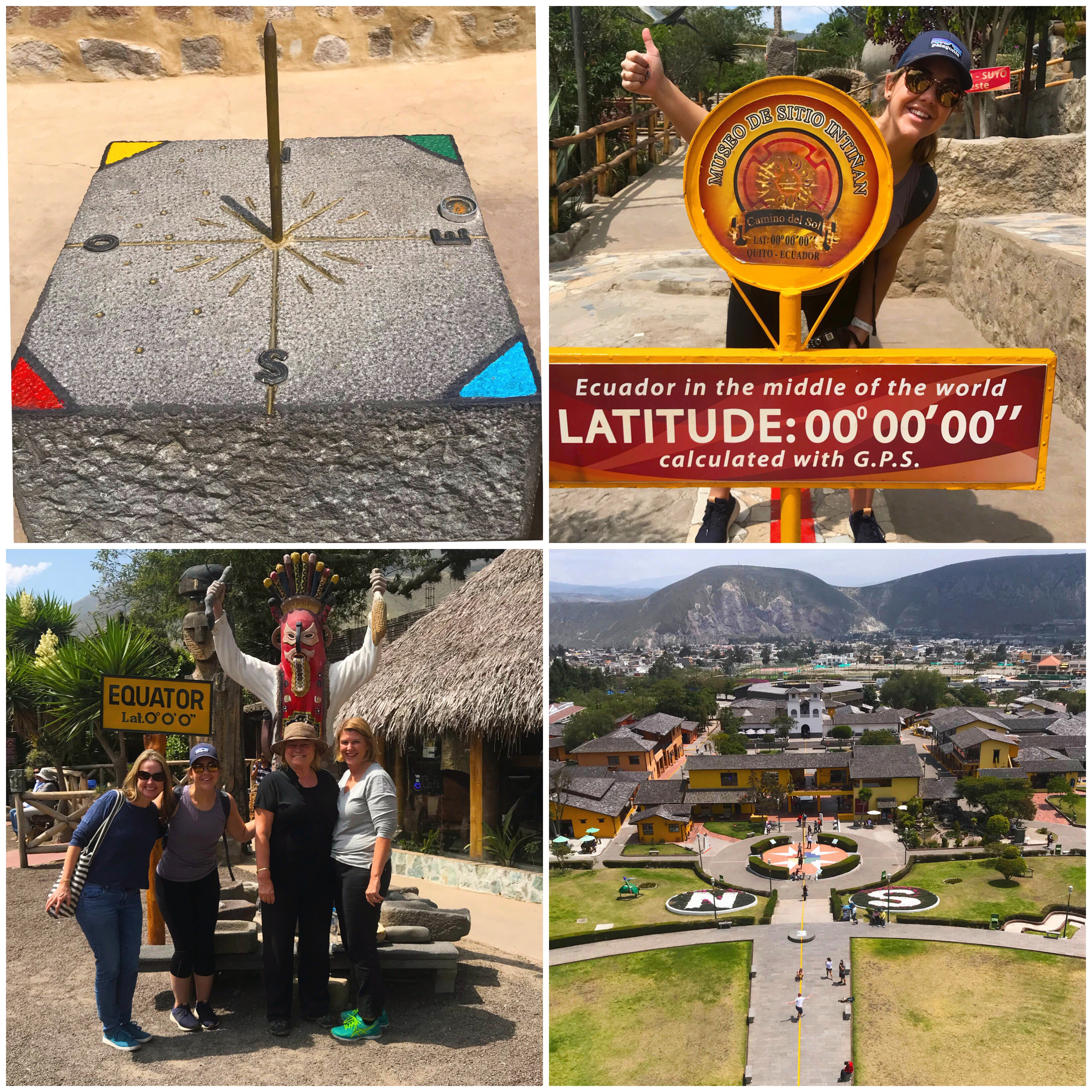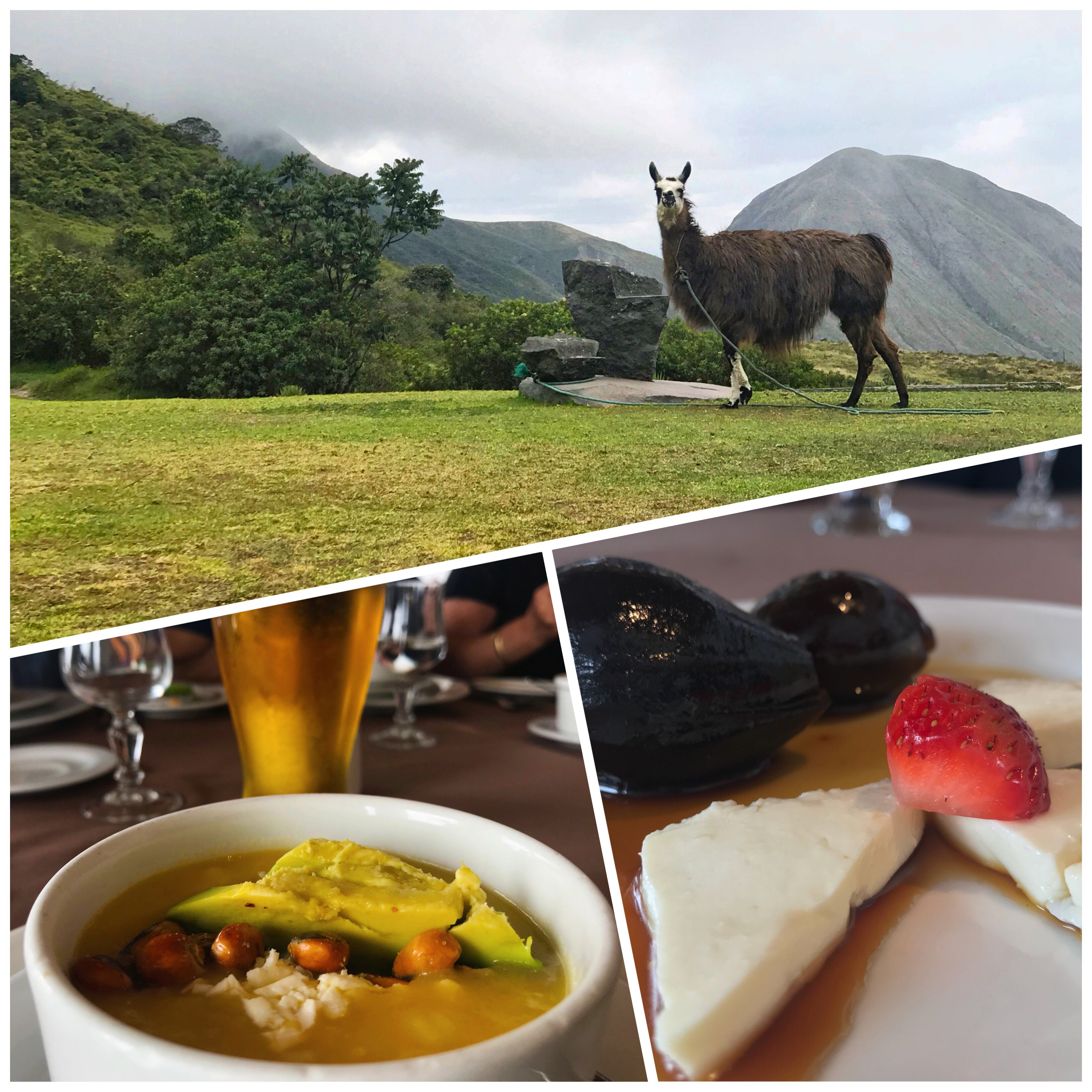La Mitad del Mundo – the Middle of the World – required an early call time, so at 7am I made my way to the second hotel of the trip and readied my backpack. Abby and Sheila’s tour guide, Omar, agreed to host us for the day-long adventure and shuffled us into a small van for transport outside of the city.
An hour later, we found ourselves scathing the tiny twists and turns of a massive mountainside overlooking Quito. [Fun fact for those who are curious: Qui means center, to means earth. Put them together and you have Quito or center earth.] The wheels on the van skidded over the dust and rocks as we clung to the cliffs for dear life. Out driver whispered assurances in Spanish while the rest of us contemplated our escape. Alas, we reached the top of the mountain known as Catequilla.
Catequilla is known to be a sacred indigenous site constructed more than 1,000 years ago, that houses one of the original sundials linking directly to the ancient Aztec’s ability to track time, the equinox and so much more. We jumped from the van to stretch our legs, acclimate to the altitude and take in the expansive views. To the left was the massive city of Quito in all of its bustling glory, and to the right, the rolling hills of the Andes each greener than the next. In the center of Catequilla – which looks like a large, open field of weeds and wildflowers – there is a stone fireplace and further to the left towards the cliff side, the rocks that form the original sundial. Most noticeable is the massive iron totem pole that looks as though it touches the sky (unfortunately, Omar noted that the totem pole has zero significance or meaning other than glorifying the site of the original 0.00 degrees/Equator).

Standing among the rocks of the original sundial felt surreal. To imagine the ancient Aztecs gathered around these stones, waiting and tracking the Equinox to better understand Earth is beyond fascinating. Through the use of shadows, ancient measurements, and plain old patience, these individuals were able to identify the exact (well, nearly exact!) location of la Mitad del Mundo.
Nearby there are also several local museums that educate tourists and visitors on the Equator’s ancient myths, facts and everything in between. At the colorful and lively Museo de Sitio Intinan (Camino Del Sol), we trailed our guide like eager puppy dogs, listening intently about ancient Ecuadorian traditions. A few key takeaways include:
- Ancient Ecuadorians buried their dead in the fetal position inside massive clay pots. According to their traditions, it was custom to exit the world similar to the way one entered the world — from the womb. Their powerful leaders were also buried with their belongings, money, and treasures — not much different than the ancient Egyptians.
- Traditional Ecuadorian homes – even today – are built from straw, clay and animal manure, as the structures are sturdy, somewhat climate controlled, and are flexible in earthquakes which is extremely important in the country.
- Another famed tradition among the Jivaro tribe is the “shrinking of heads” as a way to honor the dead or claim the life of an enemy of war. This was hands down the most interesting custom to hear about. Here’s a little more on the process from what I can remember: first the deceased’s head is decapitated so that the expert “craftsmen” can remove the entire skull without damaging the face or facial features. Then the deceased’s lips are sewn shut, as legend has it that it prevents the spirit from leaving the body. Afterwards, the skin of the head/face is cleaned in a mixture (or potion you could say…) that is only known to those who are craftsman of this process; the complete list of ingredients has never been revealed. Once dried, the shrunken head is adorned with decorative feathers – pending the deceased is a warrior, leader or community member of great importance. For enemies of war, the shrunken head is placed atop a spear as a constant reminder of victory. We were able to see a head of a Chief’s son, who lost his life around age 12. Note: This is still custom today!

The most well visited site of the Equator – meaning equal parts – is the Mitad del Mundo city park/museum. In the center of the museum park stands a 30 ft tall stone trapezoid monument signifying the center of the world/the Equator line as identified by the French. A yellow line of paint divides North from South, and affords visitors with fabulous picture taking opportunities. Once inside, we had the opportunity to continue learning more about the discovery of the Equator pre/post-GPS, and further our understanding of Ecuador’s indigenous groups, many of whom are still around today specifically in the Amazon.
The fourth and final stop lead us further into the mountains, above the misty clouds. A short distance from the Equator, sits one of Ecuador’s active volcanic craters which was formed from the now extinct Pululahua. The 3383-hectar reserve is home to roughly 16 Ecuadorian families (according to Omar), who stay on the land because of the plentiful and fertile soil. We admired the view of the luscious land and watched the fog swoop over the valley. The lookout point, known as Mirador de Ventanillas, is a short trek away from the gorgeous ‘El Crater’ restaurant and B&B — where we had a traditional Ecuadorian lunch. From our window seats at the restaurant, we could hardly see anything at all due to the thick cloud cover that moved in, which is apparently typical during the afternoon in Ecuador’s rainy season.

With Sunday afternoon coming to a close, we headed back to Quito to prepare for the formal kick-off of the CARE Ecuador program. More on that and our first day in the field tomorrow!
Adios~